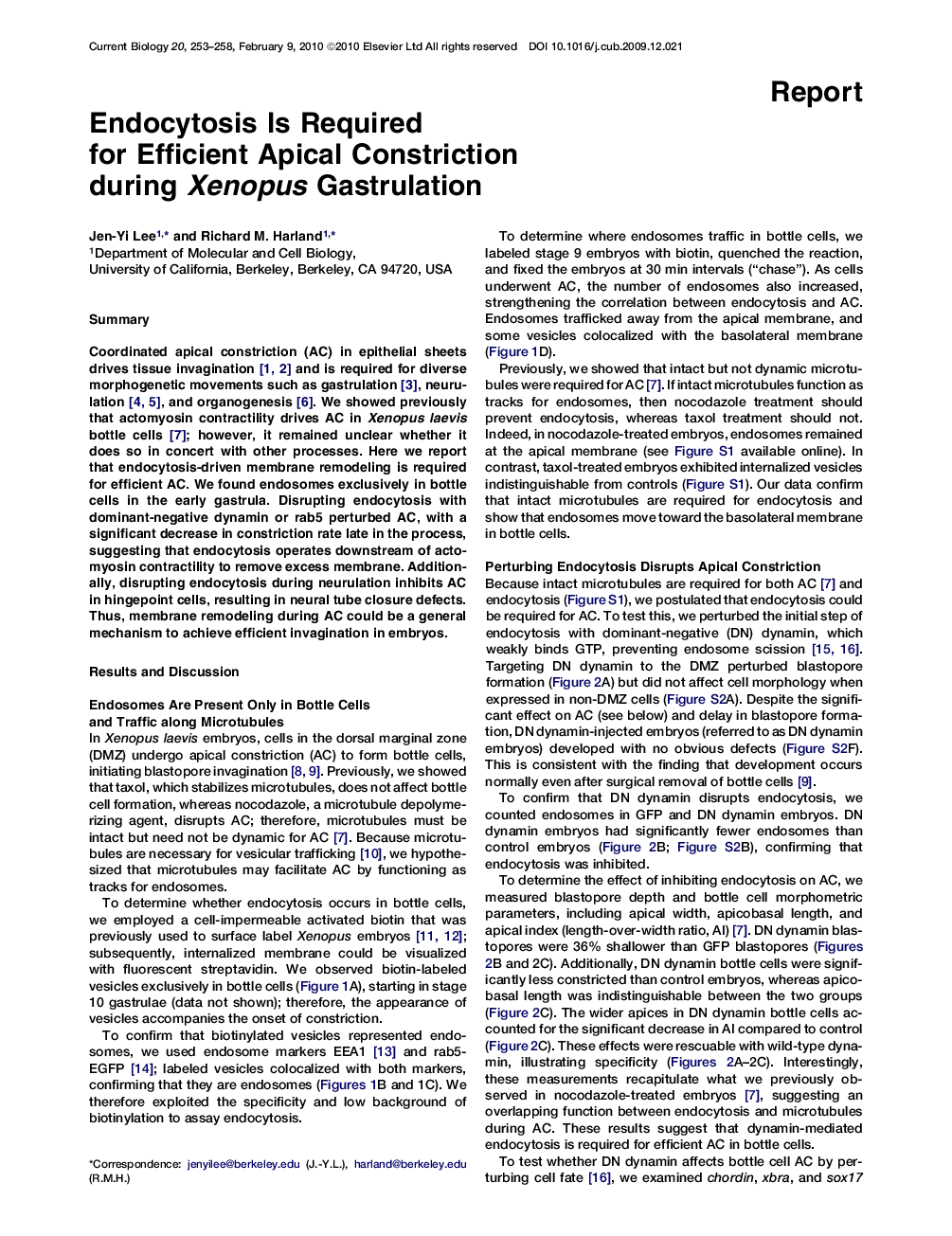| Article ID | Journal | Published Year | Pages | File Type |
|---|---|---|---|---|
| 2043919 | Current Biology | 2010 | 6 Pages |
SummaryCoordinated apical constriction (AC) in epithelial sheets drives tissue invagination 1 and 2 and is required for diverse morphogenetic movements such as gastrulation [3], neurulation 4 and 5, and organogenesis [6]. We showed previously that actomyosin contractility drives AC in Xenopus laevis bottle cells [7]; however, it remained unclear whether it does so in concert with other processes. Here we report that endocytosis-driven membrane remodeling is required for efficient AC. We found endosomes exclusively in bottle cells in the early gastrula. Disrupting endocytosis with dominant-negative dynamin or rab5 perturbed AC, with a significant decrease in constriction rate late in the process, suggesting that endocytosis operates downstream of actomyosin contractility to remove excess membrane. Additionally, disrupting endocytosis during neurulation inhibits AC in hingepoint cells, resulting in neural tube closure defects. Thus, membrane remodeling during AC could be a general mechanism to achieve efficient invagination in embryos.Highlights► During Xenopus gastrulation, endosomes are only found in bottle cells ► Endocytosis functions with actomyosin contractility during apical constriction ► Perturbing endocytosis results in neural tube closure defects ► Endocytosis could be used as a general mechanism to achieve efficient invagination
